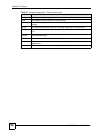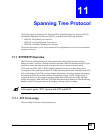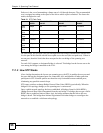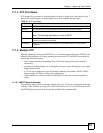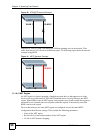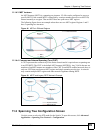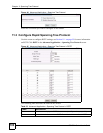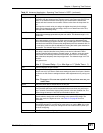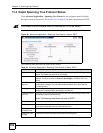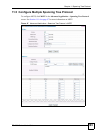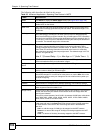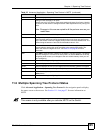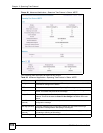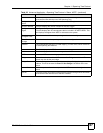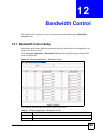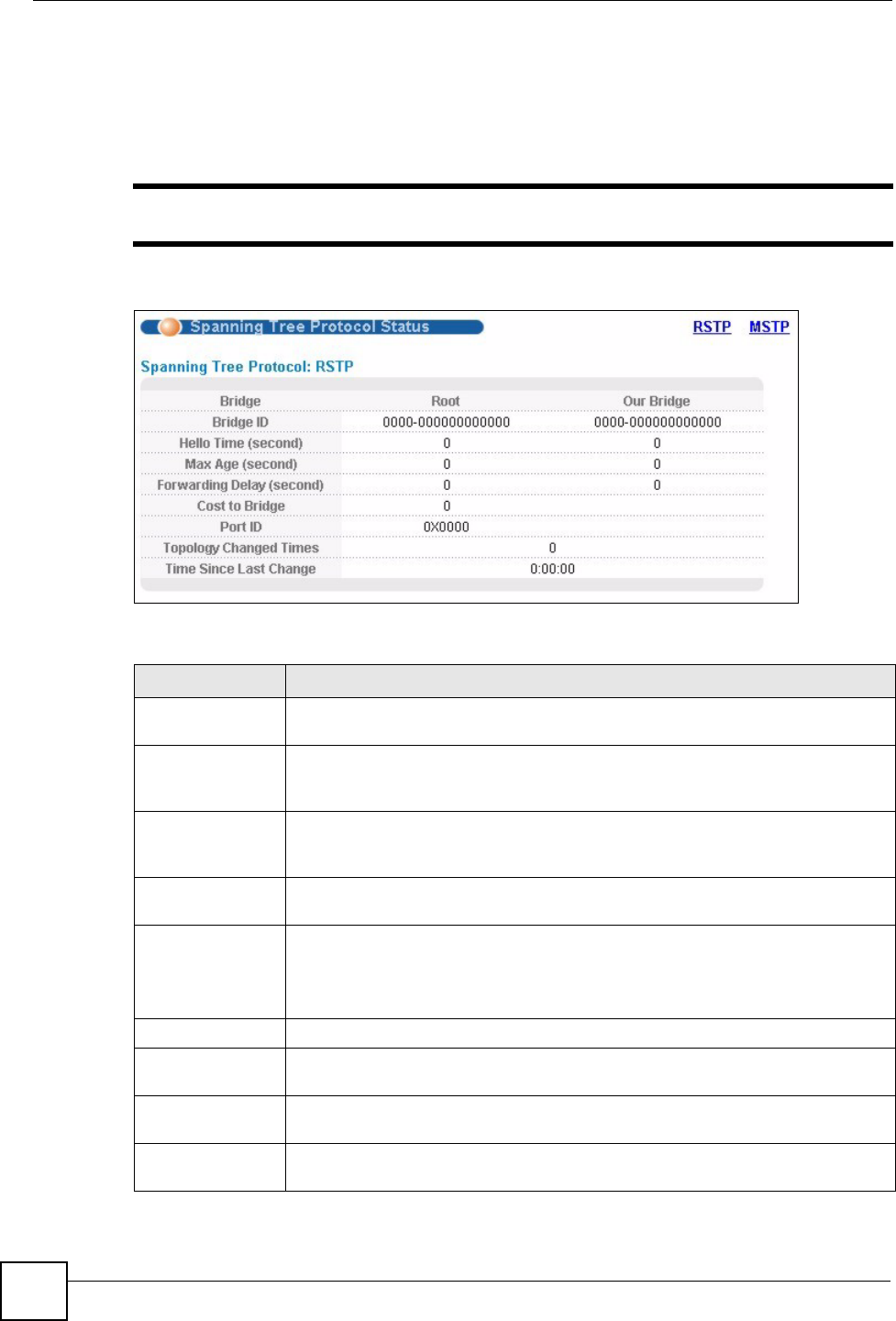
Chapter 11 Spanning Tree Protocol
ES-2024 Series User’s Guide
102
11.4 Rapid Spanning Tree Protocol Status
Click Advanced Application > Spanning Tree Protocol in the navigation panel to display
the status screen as shown next. See Section 11.1 on page 95 for more information on RSTP.
" This screen is only available after you activate RSTP on the Switch.
Figure 46 Advanced Application > Spanning Tree Protocol > Status: RSTP
The following table describes the labels in this screen.
Table 24 Advanced Application > Spanning Tree Protocol > Status: RSTP
LABEL DESCRIPTION
Bridge Root refers to the base of the spanning tree (the root bridge). Our Bridge is this
Switch. This Switch may also be the root bridge.
Bridge ID This is the unique identifier for this bridge, consisting of bridge priority plus MAC
address. This ID is the same for Root and Our Bridge if the Switch is the root
switch.
Hello Time
(second)
This is the time interval (in seconds) at which the root switch transmits a
configuration message. The root bridge determines Hello Time, Max Age and
Forwarding Delay.
Max Age (second) This is the maximum time (in seconds) a switch can wait without receiving a
configuration message before attempting to reconfigure.
Forwarding Delay
(second)
This is the time (in seconds) the root switch will wait before changing states (that
is, listening to learning to forwarding).
Note: The listening state does not exist in RSTP.
Cost to Bridge This is the path cost from the root port on this Switch to the root switch.
Port ID This is the priority and number of the port on the Switch through which this Switch
must communicate with the root of the Spanning Tree.
Topology
Changed Times
This is the number of times the spanning tree has been reconfigured.
Time Since Last
Change
This is the time since the spanning tree was last reconfigured.



